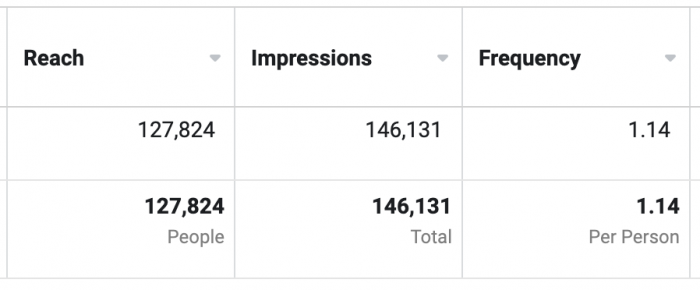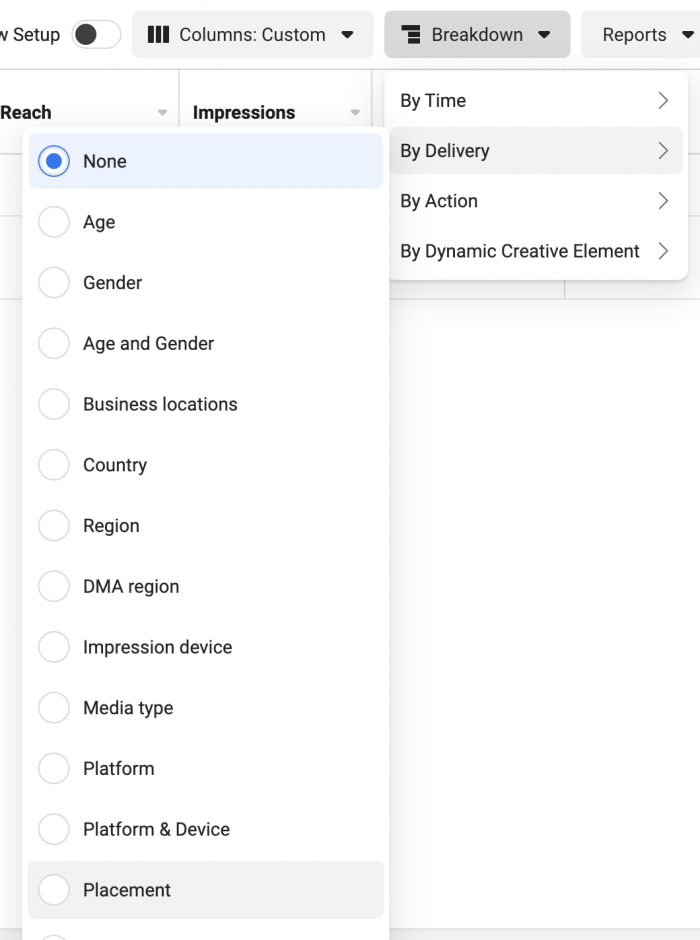I love to use Reach optimization. It’s only an option for the right situation, but one reason I use it is for Frequency Capping. A small problem, though, that I recently uncovered: Frequency CappingFrequency capping allows you to limit the number of times your audience sees your ad during a given window of time. More is imperfect. Facebook doesn’t enforce a strict cap.
In this post, we’ll talk more about the following:
- What FrequencyCalculated as (Impressions/Reach), Frequency is a Facebook ads metric that measures the average number of times users have seen your ad. More Capping is
- How it’s supposed to work
- The imperfection
- How to detect and control it
- How much it matters
Frequency Capping
When you use Reach OptimizationTo access Reach optimization, use the Awareness objective and "Maximize reach of ads" performance goal. Reach optimization allows you to show your Facebook ads to the maximum number of people while using a frequency cap. More, advertisers have the ability to put a cap on the number of times a user can be reached. This feature is unique to this specific optimizationThe Performance Goal is chosen within the ad set and determines optimization and delivery. How you optimize impacts who sees your ad. Meta will show your ad to people most likely to perform your desired action. More method.
A Frequency Cap is set from the ad setAn ad set is a Facebook ads grouping where settings like targeting, scheduling, optimization, and placement are determined. More within the Optimization & Delivery section.

The default is 1 impression every 7 days, but you have full flexibility to set it at whatever you want.
The Imperfection
I’ve used ReachReach measures the number of Accounts Center Accounts (formerly users) that saw your ads at least once. You can have one account reached with multiple impressions. More with Frequency Capping for years, but I’ve never had doubts about its execution — at least until recently.
I’m running a test that relies entirely on Frequency Capping running the way it should. My goal is to reach all or most of my Facebook page followers with a single ad. To do that, I used a frequency cap of 1 impression in 90 days.
When I created this ad, the copy was clear about my goals and how it was created. I indicated that each user should only see the ad once.
And then I received a comment from a user indicating they had seen it multiple times. At first, I didn’t worry much about it. But, it happened often enough that it raised some doubts.
If you take a closer look at the settings for Frequency Caps, there’s a message from Facebook that I believe is relatively new (I don’t recall seeing it before).

The message:
As part of our efforts to regularly update our systems and processes, we’ve made changes that may result in some people temporarily seeing your ad more times than the maximum frequency you set.
Facebook isn’t clear why, but they won’t always strictly enforce these caps.
It makes sense that it’s impossible to guarantee perfect enforcement. For example, you could conceivably reach a user in two places at the same time on two different devices. I’m okay with imperfection.
But this was sounding less precise than I’d like.
How to Detect and Control it
Recall that I set this up with a frequency cap of 1 impression per 90 days. Since the campaignThe campaign is the foundation of your Facebook ad. This is where you'll set an advertising objective, which defines what you want your ad to achieve. More hasn’t been running for 90 days, the average frequency should be somewhere around 1.00.
Instead, my overall frequency for this campaign is currently 1.14. While that’s certainly close to 1.00, it represents about 18,000 extra impressionsImpressions are the number of times your ads were displayed to your target audience. Impressions aren't counted if it is detected they came from bots. More that I didn’t want to pay for.

That’s an unfortunate waste.
One of the first messages I received about this was from a user who said they were seeing the ad in the Instant Articles placementA placement is a location where your ad is shown. Examples include Facebook's mobile Feed, Messenger, Instagram feed, Audience Network, right-hand column, and more. More. We can actually do some digging to see if this placement is problematic.
Within Ads Manager, you can run a Breakdown by Placement.

Some of the frequencies stuck reliably close to 1.00:
- Facebook Groups Feed (Mobile App): 1.00
- Facebook Stories (Mobile App): 1.00
- Facebook News Feed (Desktop): 1.00
- Facebook News Feed (Mobile Web): 1.00
- Instagram Explore (Mobile App): 1.00
- Facebook Video Feeds (Mobile App): 1.01
Truthfully, all but two placements were below the overall average of 1.14:
- Facebook In-Stream Video (Mobile App): 1.15
- Facebook Instant Article (Mobile App): 1.38
Not only was the Instant Article placement significantly higher than anything else, but it also represents 12% of the ad set’s impressions. Considering I turned this placement off some time ago after figuring this out, that’s a lot!
Does it Matter?
Normally, I wouldn’t even notice this because I wouldn’t care about reaching people more than once. So, this is unique.
Ultimately, you will need to decide whether it matters. Does it truly matter whether you reach people with 1 impression every 7 days or whether you reach some people twice? Granted, that’s waste that will be charged to your account, but my feeling is that there are bigger issues to worry about.
The main thing is to be aware of it. It does appear to be a new issue, based on the message from Facebook. Maybe it’s something that is in the process of being corrected. Regardless, you can use BreakdownBreakdown is a way to get insights into your ad performance related to time, delivery, action, or dynamic creative element. More by Placement to spot whether it’s an issue for specific placements. At that point, you could choose to turn those placements off.
Is there something unique to in-stream video and Instant Articles that make frequency difficult to control? Maybe. Or it’s entirely possible that what I’m seeing is random and not unique to those placements.
Your Turn
Do you use Frequency Capping? Have you seen this issue before, and does it matter to you?
Let me know in the comments below!







